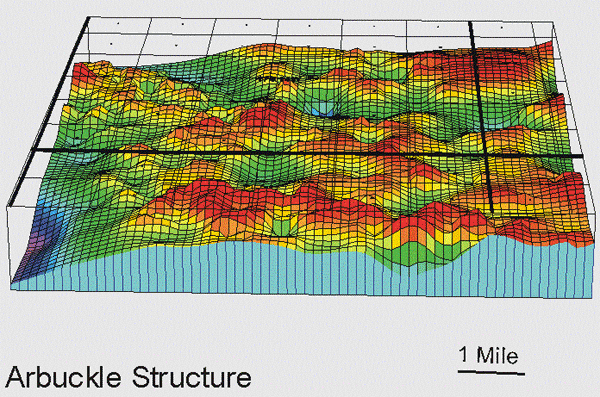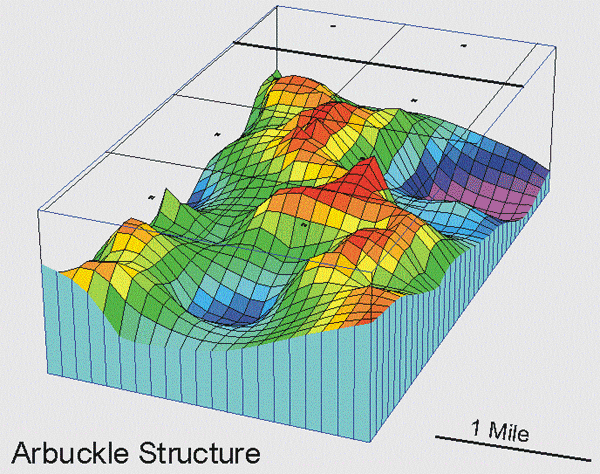
Kansas Geological Survey
Open-file Report 2001-55

|
|
Kansas Geological Survey Open-file Report 2001-55 |

Polygonal Karst (Cockpit)

Sapped Plateaus
Two different styles of erosional terrains were identified
on the Sub-Pennsylvanian Arbuckle surface, a polygonal karst terrain
(cockpit karst, shown above left) and plateau-like erosional features
modified by ground-water sapping (above right). The two types
of erosional terrains are end members and numerous intermediate
examples exist. However, differences in oil productivity were
recognized between cockpit terrains andplateau regions. Relatively
small, irregularly shaped fields that occur in mature polygonal
karst landscapes experience relatively low cumulative production
per well (typically 50,000-100,000). Fields that occur on ground-water
sapped platueas show significantly higher per well cumulative
hydrocarbon recovery (200,000-300,000).
Initial analysis of drill stem test data from relatively recent
(1960-present) infill wells from the study area highlight other
production differences in the two types of geomorphic terrains.
In general, infill wells located in areas dominated by polygonal
karst experienced relatively high final shut in pressures (1000-1200
psi). Infill wells located on sapped plateaus were characterized
by significantly lower final shut in pressures (250-750 psi).
One possible explanation for this might relate to the stratigraphic
controls on reservoir development. Ground water sapped plateausare
interpreted to have intra-formational shale layers or permeability
barriers within the Arbuckle strata, responsible for directing
ground water
flow down-dip. The same ground water flow barriers could also
be responsible for reducing vertical permeability and aquifer
support. The permeability barriers reduce the influence of a strong
bottom water drive. The cockpit terrains characteristic of Arbuckle
reservoirs formed by vertical ground water movement show strong
pressure support from a bottom water drive.
|
|
e-mail : webadmin@kgs.ku.edu
Last updated January 2002
http://www.kgs.ku.edu/PRS/publication/OFR2001-55/P3-06.html